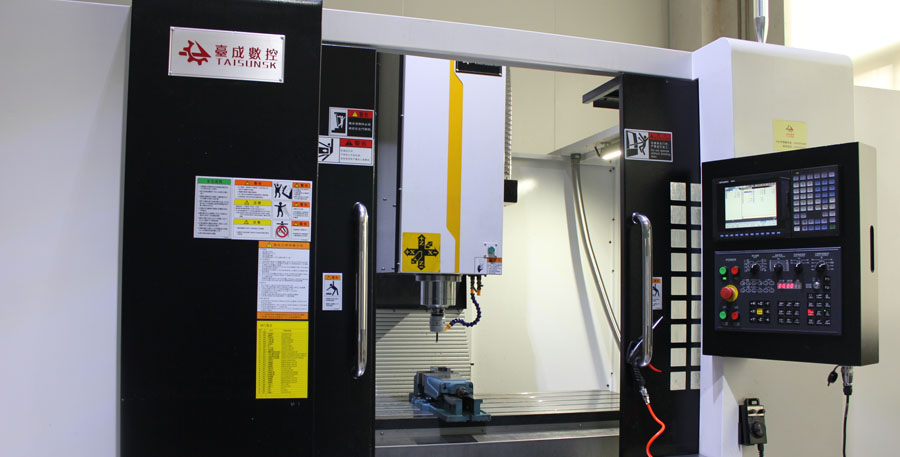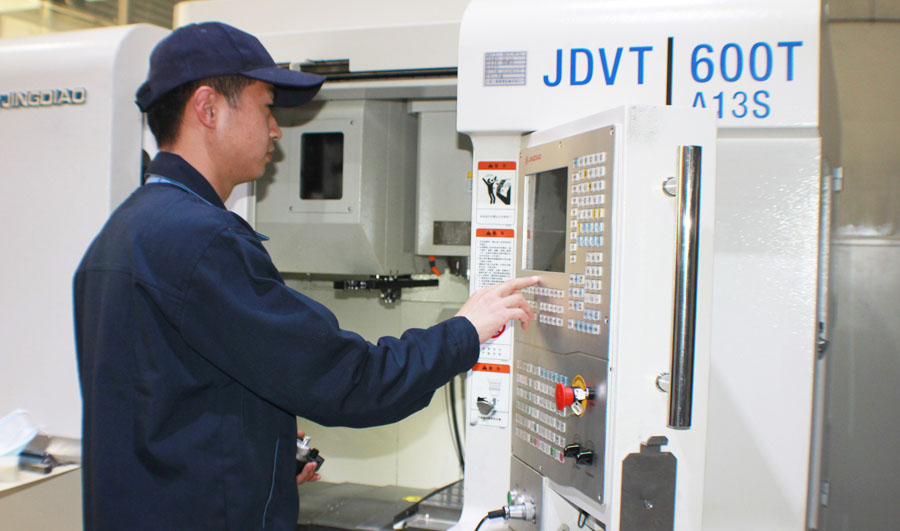Nowadays, mechanization and automation have become the mainstream of industry development. In the application process of machinery and equipment composed of various parts, problems are prone to occur due to lack of coordination or cooperation in some parts. Raw material specifications, performance, material use, machine vibration, clamping pressure or looseness, elastic deformation process system, worker operations, testing methods, and inspector errors, etc., all have an impact on the quality of processed products. When we talk about the quality of working prototypes, it is not difficult to think of the following 5 main factors:
1. Operator
As machine functions become more and more complex, the level of programming and operating personnel varies greatly. Combining the superb human skills with computer information technology can maximize the use of machines. To this end, machine operators must be familiar with equipment performance. If the operator does not know enough about the performance of the equipment, he may misoperate, thereby accelerating the wear and tear of the machine parts, and even causing damage to the machine.
Therefore, it will require a lot of maintenance costs and a long maintenance time. In order to restore the original accuracy of the equipment, machine tool operators must understand and master the machine tool manual and its operating precautions, so as to achieve civilized production and safe processing. It is necessary to strengthen the skills training for all employees in machining and production, rationally arrange primary and secondary processing positions, and improve the quality awareness and sense of work responsibility of the personnel.
2. Machine
A complete processing system consists of machine tools, workpieces, fixtures and tools. Machining accuracy is related to the accuracy of the entire process system. Various errors of the process system will be manifested as machining tolerances in different forms under different circumstances.
Machine accuracy is an important factor affecting the quality of prototype parts. When the accuracy of the machine is poor, some parts are damaged or the gap between the parts is adjusted improperly, various defects will appear in the prototype during the processing.
Therefore, we must not only choose the right turning angle, the right cutting amount and the CNC processing method, but also understand the impact of machine tool accuracy on the processing quality. The maintenance of the machine directly affects the processing quality and production efficiency of the prototype. In order to ensure work accuracy and extend its working life, all machines must be properly maintained. Usually after 500 hours of machine operation, first level maintenance is required.

3. Machining Method
There are many machining methods, and cutting is the most common one. During the cutting process, the workpiece is subject to changes in force and heat, and the physical and mechanical properties of the metal material will also be slightly hardened, so the choice of tools plays an important role.
Under normal circumstances, the material of the tool should be selected according to the material of the workpiece to be processed. Otherwise, the surface of the workpiece will form thorns related to the tool, which will easily increase the roughness of the workpiece and reduce the surface quality at the same time. In addition to tool factors, the cutting environment and cutting processing conditions, such as cutting volume, cutting lubrication, etc., also have an impact on processing quality.
In the machining process, the machining system is the commander-in-chief of the entire cutting process. All machining processes are executed in accordance with the system, so the accuracy and rigidity of the machining system are also one of the main factors that affect the quality of the machining.
There Are 2 Principles For Machining Process Arrangement:
Processing dispersion:
Use multiple processes to manufacture complex parts, which are broken down into multiple machines for processing.
Processing concentration:
Compound machine functions, such as turning and milling compound, laser ultrasonic vibration processing, grinding, five-axis linkage, etc.
All processes are completed by one machine. According to the structural analysis of the workpiece, the use of different processing methods is also an important factor affecting the processing quality.
4. Material
Machining materials are generally divided into plastics and metals. Each material has its own characteristics. It is also very important to select suitable materials according to the requirements and applications of the workpiece during the processing. The consistency of the materials should be good, otherwise the quality of the same part may be different. When the hardness of the material is appropriate, try to ensure that the material is not deformed. These are important prerequisites for assessing quality.

5. Inspection
After the machine finishes the workpiece, inspection is the last critical step before delivery to the customer. Machining inspections generally need to pay attention to two aspects:
1. Inspection Procedure
The inspection process includes the inspection process, as well as related regulations, systems, standards, etc. Generally speaking, the inspection process is to inspect the intervention and intervention methods in the production process, including the first inspection, self-inspection, mutual inspection and full-time inspection.
2. Inspection Method
Refers to how to inspect and inspect standards. The inspection of machined parts is generally based on the mechanical drawings, and the products are inspected through inspection instruments and measuring tools.
Traditional mechanical machining testing instruments include micrometers, dial indicators, vernier cards, planes, straightedges, level gauges and various plug gauges and ring gauges. More modern mechanical processing testing instruments include optical collimators, projectors, three-dimensional measuring instruments, theodolites, and laser detectors.
Qualified mechanical product inspectors must master the knowledge of inspection instruments and measuring tools related to the unit’s products.
In the process of machining, in order to control the machining quality, it is necessary to understand and analyze the various influencing factors that the processing quality does not meet the requirements, and at the same time take effective technical measures to overcome them.
Conclusion
With the continuous improvement of modern production levels, the requirements for the quality of machined products are getting higher and higher. Only by adopting comprehensive measures for quality control can we finally achieve the purpose of improving the service life of the equipment and the service life of the equipment, and taking into account the economic benefits and energy saving in the machining process. At the same time, it is necessary to ensure the quality of mechanical machining to promote the long-term stable development of the mechanical machining industry.



